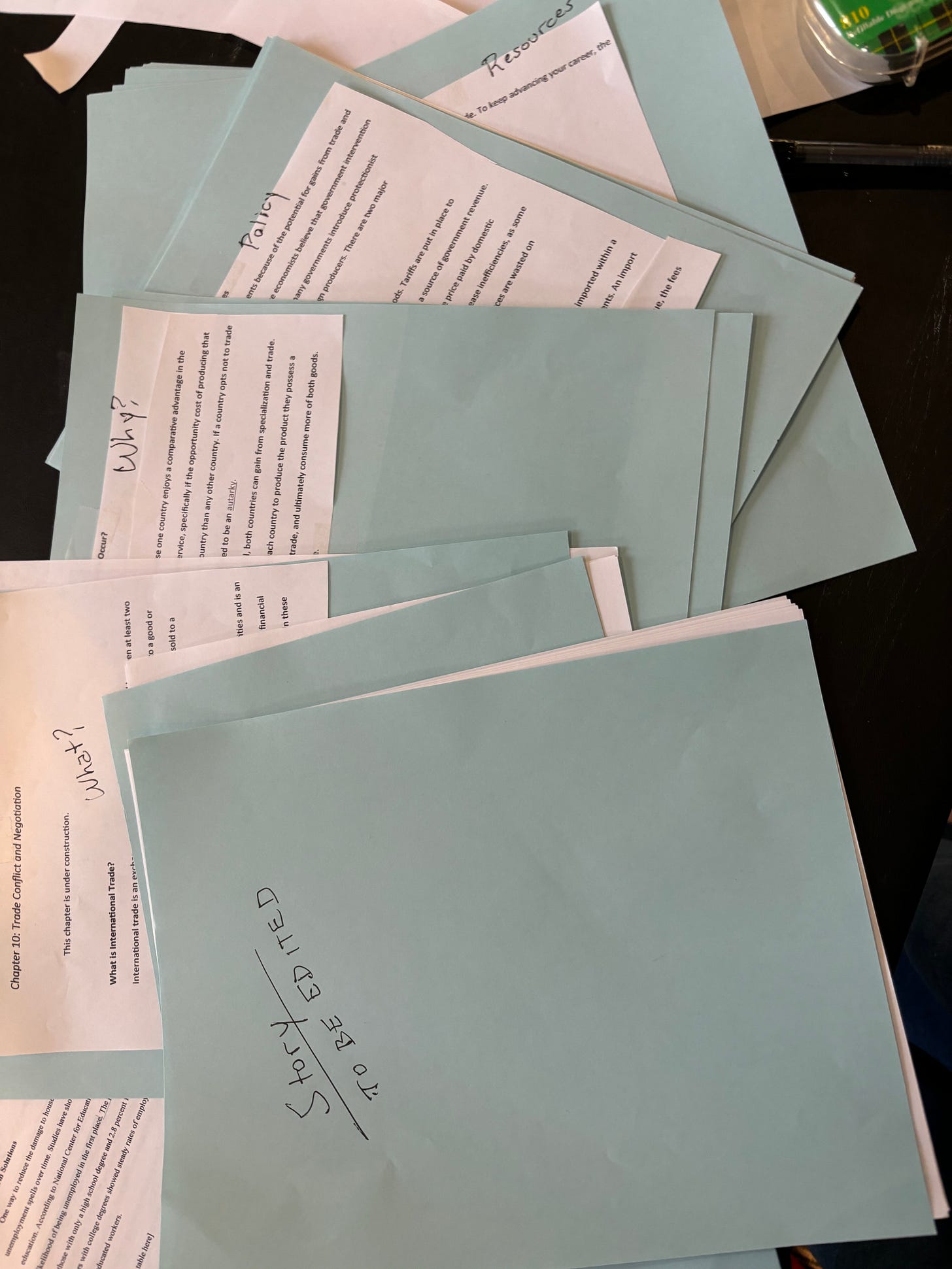On Tuesday, I shared part of my story on writing a book. We left with how what I could do in the classroom didn’t translate into a book.
I can’t use a six-graph model of the economy to demonstrate policy at work. Especially when inflation is too high. Because, after the pandemic, the world got inflation. Too much money chasing too few goods.
And just like my friend who said she didn’t get inflation, there were a lot of Americans who didn’t understand why prices had shot up so quickly.
I needed a better way to communicate that the Keynesian model is the simplest way to show how the economy works. And what policy can do.
Because I didn’t have my message. Or any idea of the teaching points I needed to make to get someone to pick up my book and read it, all the way through. So that they could get inflation. And recession. And why trade conflict matters.
I had one huge teaching point: to understand the economy, and how we got over the tough times, you needed to understand government policy. They needed to know about the policies that help us cope with inflation, and policies that alleviate the suffering from high unemployment.
They needed to know that the economy would not only survive but get better. Everyone needs to know this. I thought that when everyone who needed to know did know, that would be enough.
And I wanted to write something that people would be happy to pass around. Okay, I know, Nikki, get real, this is a book about economics. Who’s going to read that? Turns out there might be a few. But that was never my goal.
My goal was to make it accessible, but my message just wasn’t there.
Getting a book right takes time
It took a year to get my message right. My original message (which wasn’t a message) was long and unwieldy.
There can only be words that help a reader learn. And those words must follow a plan.
Readers need a plan to get them from “these are numbers I hear on the news” to “I understand what they say and can interpret those numbers.” And to say, “I can see what, if anything, needs to be done next.”
And maybe, just maybe they can say, “I can make choices now so that I know. About the next recession, about the next bout of inflation.”
So, in community and with lots of help, I developed my message, which was simple. The economy will get better over time, and your personal economy can benefit from knowing what the government and the Federal Reserve will do when something goes wrong.
And I while had a list of topics from the textbook, I produced two new ones not often featured in textbooks: 1) a separate section on who the policy makers are for the macroeconomy (the whole thing), and 2) an early chapter (Chapter 2) on economic data reporting and what those reports mean.
Reports like the unemployment rate, the inflation rate, and all that stuff about Gross Domestic Product (GDP) and growth.
I thought my readers needed to know that to start with. Because then they might keep reading to learn more about why those numbers are so important.
We are learning what our new president will do. But we can’t be sure of the impact his actions will have. But at least my readers will understand the economic situation a bit better.
Writing a book is a humbling experience. I had expert knowledge of the subject and can write. But that only takes you so far. I needed someone to help me edit my book, as well. So, in addition to Melissa’s help, I took a course on self-editing in the winter of 2023 and repeated it in the summer of 2024. [1]
And then, earlier this month, my husband discovered the final piece of the puzzle after reading the first chapter. You may remember me talking about Richard Feynman and teaching something to an 8-year old. That will show up in my book.
I have, I think, three or four more nonfiction books in me. They will take time. But I’m okay with that now.
This time, I can work smarter. This time I will have a better idea of how to start and where I want to go. In fact, that next book is calling to me as I write this.
Thank you as always for taking the time to read this. Without your support, my little book wouldn’t have gotten finished.
Nikki
PS: Next week (hopefully), I’m going to unveil a new name and a banner. But I’m in Greenville at a conference, so I’ll have a little catching up to do. Oh, and stay tuned for more information about the book.
[1] I mentioned Melissa Haskin in Part 1 on Tuesday.






I'm glad to hear Chapter 2 is, "the economic data and what they mean." For the past 20 years, I've spent the first 3 weeks of my intro class doing this. They need to know GDP, price levels and inflation, and basic labor market measures in order to follow the news and apply what they will learn to the real world. I also have them set up a FRED account so that they can start using that resource in their work.
I'm looking forward to reading the book! I don't know nearly enough about this topic other than broad strokes.